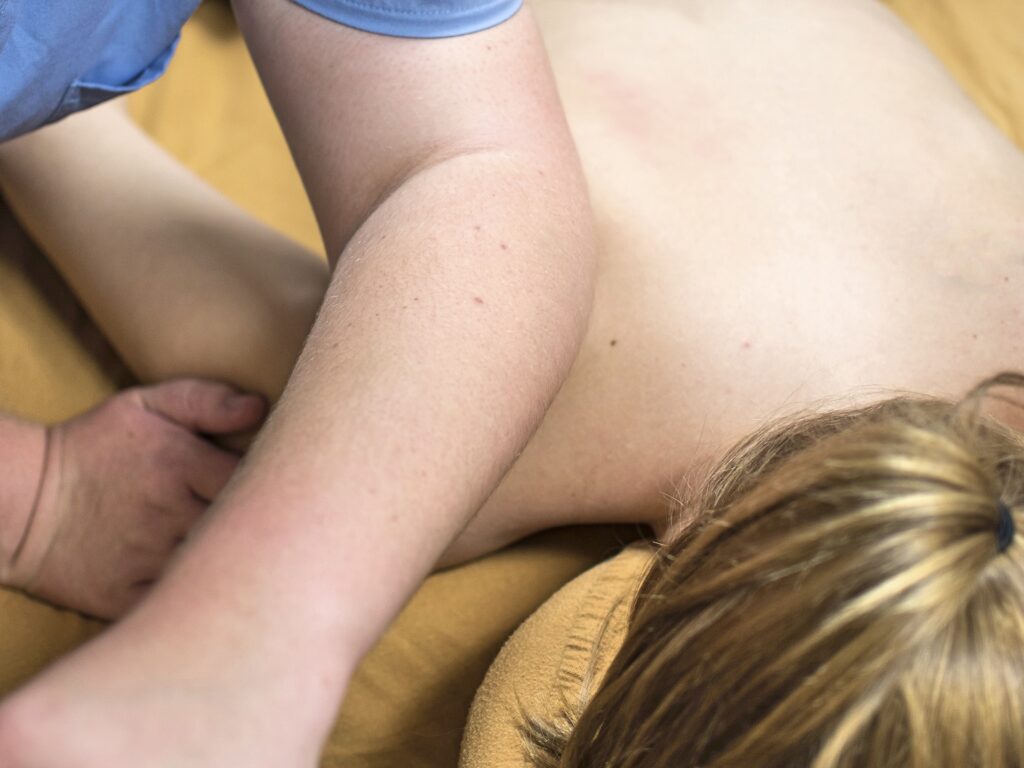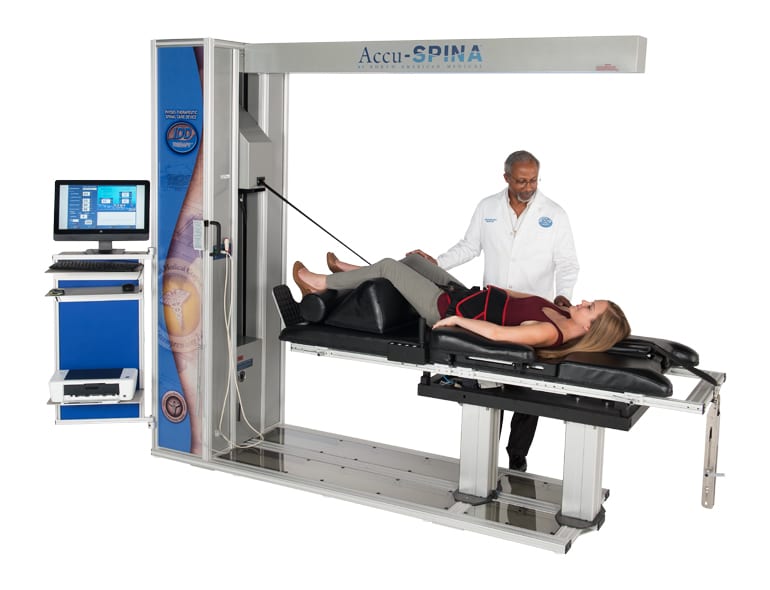By Tim Hanwell, Principal Osteopath and Director of IDD Therapy at Berkhamsted Osteopaths
We’ve all got out of bed in the morning with a bit of back pain but we shrug it off as something everyone has to put up with now and then.
However, what if, a few days later the pain still hasn’t subsided?
During stage one of back pain, we’ve taken all the obvious steps to:
Manage the pain
- Ignored it and hoped it would go away
- Taken pain killers such as Ibuprofen and paracetamol
- Sought stronger pain killers from the GP
- Embarked on exercises such as Pilates, swimming and stretching
- Alternated with hot and cold compresses
The trouble is that we are now possibly three or four weeks into the problem and there has been little relief from the pain, which can be depressing and debilitating.
In years gone by, the advice for back pain sufferers was always complete bed rest, with pain killers, but over the years that has changed, and we now know that backs heal better when there is movement in the muscles and joints. However, when you are in severe pain you are unlikely to feel like moving around, so you do instinctively move less. But lying down and resting will not do any good in the long term.
Two types of instances when people seek help for back pain.
Sometimes the reason is obvious. We remember lifting something awkwardly or tripping clumsily and feeling something ‘give’ in our backs.
For example, builders and plumbers who are lifting repetitively will often seek help from an osteopath after just one incident – they prefer not to ‘wait and see’ as time off work is lost income.
But then there are those who have no idea what has caused the pain and these tend to fall into the category of ‘postural breakdown’.
We are seeing more people now who are being asked to sit for ridiculously long hours in the workplace.
They are bent over laptops and computers and their backs are fixed into a static position for great swathes of the day. It’s essential that we are proactive in minimizing the build-up to back pain caused by our everyday lives.

Next steps
The next obvious step to alleviate long-term back pain is a visit to the osteopath or a physiotherapist
An osteopath will generally aim to stretch and loosen up the muscles and joints through mobilisation and manipulation while an NHS physiotherapist will tend to opt for a series of exercise-based treatments.
It is at this point when everything seems to have failed that the patient will begin to consider steroid injections and surgery. These are a last resort that people reach out for when they have tried absolutely everything else.
But recent years have seen another alternative with the introduction of IDD Therapy, the fastest growing non-surgical spinal treatment.
Around 6 years ago I was in that hopeless position myself, in such terrible pain that I was considering surgery. People forget that osteopaths and physiotherapists often suffer back pain themselves due to the physical requirements of their work.
Whilst I was researching spinal surgery online, I discovered IDD Therapy, and I felt it could offer me the relief I was looking for. My pain had been caused by a compression injury and the decompression IDD Therapy offered made complete sense.

What is IDD Therapy?
IDD Therapy is a computer-controlled treatment that helps decompress the specific spinal segment causing the pain.
Patients lie on a treatment couch where they are connected to a machine with a pelvic and a chest harness. The machine applies a gentle pulling force at a precise angle to take pressure off the targeted disc and to gently mobilise the joint and surrounding muscles.
What is unique is the angle of the stretch. Most of the time our bodies are pressed into the ground due to gravity. Nothing really stretches the spine like this does. The goal is to relieve muscle spasm, and as the pain subsides therapists use gentle manual therapy to strengthen the back.
It is what your back has been crying out to do since it was injured. IDD is very clever, by adjusting the computer input we can place the epicentre of the pulling forces so they target the problematic area.
Patients typically have a programme of IDD Therapy and long-term problems can need 20 sessions over a six-to-eight-week period. I have had patients weep with relief after treatment, admitting they had been sleeping in a chair for five years (as they couldn’t lie flat in a bed) or kneeling beside the bed all night because these have been the only comfortable positions for them.
Approximately three quarters of people with long-term back pain who come for IDD Therapy get better and many more see a marked improvement. IDD Therapy aims to reduce the back pain to the extent that it is either no longer present, or, at worst, is so mild that it has no detrimental effect on daily life.
When we get people out of pain and moving again, the aim is that they can get on with their lives and that reinforces the progress. Some people might need a top-up session, especially if their lifestyle, or workload, places pressure on the back. We keep the data from previous treatments and use it if patients do come back.
Just seeing how quickly it can make a change to people’s lives is incredible. My only problem these days is not being able to get on the machine myself for a treatment as it is so in demand!
What can you do while in lockdown?
During lockdown, there are still a number of self-help tips which you can follow to help yourself.
If you have an acute musculoskeletal injury, (this is where there has been a sudden onset of pain often due to a memorable incident and the injured area may feel hot and swollen) often placing an ice pack (wrapped in a towel to avoid ice burning the skin) on the injured area for 5 minutes and then removing it for 5 minutes and repeating will help ease the pain.
If your symptoms are stiffer in nature with no memorable injury then movement and heat can often be beneficial. Taking Arnica or anti-inflammatories could help improve your symptoms or rubbing gels and creams into the painful site might help too.
Since the lockdown, we’ve been seeing an increased number of people suffering from pain due to poor posture whilst sitting at their PC/laptop at home. This is usually non-traumatic in nature but more of a repetitive nature causing neck, shoulder, or arm pains. Adjusting your workstation setup is usually a good starting point. Video calls are available from www.thedsepartnership.co.uk.
Try to avoid sitting for more than 45 minutes at a time and make sure you take your daily allowance of fresh air; this is not only beneficial for your musculoskeletal system but also for your circulation, eye health, and mental well-being.
Simple stretches to help offset the hours of sitting are also beneficial, I recommend the cat/cow, pectoral stretches, hamstring, calf, and hip flexor stretches. There are plenty of free-to-view yoga websites if you are unsure of these techniques. Also, remember that many osteopathic and physio clinics are still offering advice over the phone or video call during lockdown if you require one to one help.

ABOUT THE AUTHOR
Tim Hanwell is the Principal Osteopath and Director of IDD Therapy at Berkhamsted Osteopaths and an osteopath at the London School of Economics Treatment Clinic in London.
IDD Therapy (Intervertebral Differential Dynamics) or is the fastest growing non-surgical spinal treatment for intervertebral discs with over 1,000 clinics worldwide and a network of clinics across the UK. http://iddtherapy.co.uk/
Facebook: IDD Therapy Europe Twitter: https://twitter.com/IDDTherapyDisc




